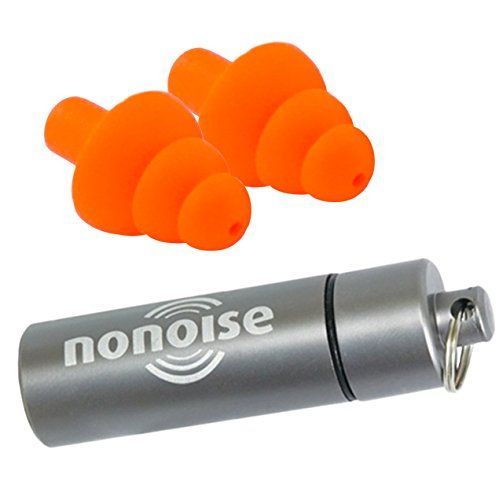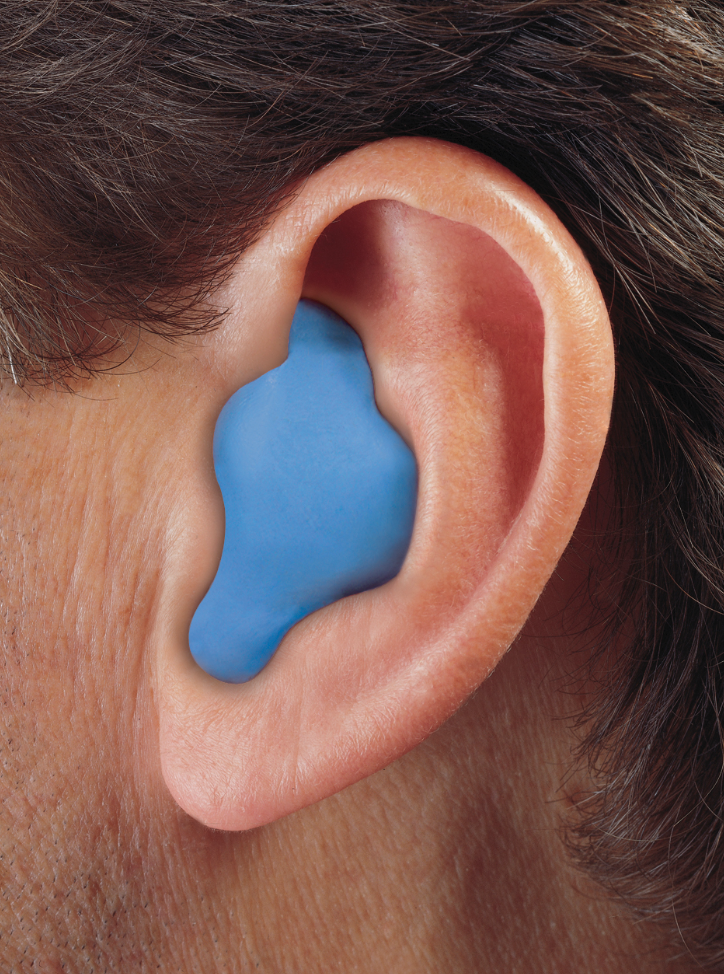Motorcycling and Your Ears – Three New Ideas for Protecting your Hearing
Winters, Texas, United States
For most people, the words motorcycles and ears in the same sentence can only be some sort of homage to how good an exhaust pipe makes your bike sound.
But not for me. A long time ago, I used to be a musician and a part time DJ. To this day, I have a very large and extensive collection of music and there’s almost always something playing in my house. A few years ago, I did have an ear infection however, and I did lose part of my hearing. As such, I do not want to lose any more. Unfortunately, motorcycling is NOT the best way to achieve this goal.
There’s been a lot of studies about motorcycling and hearing loss. I’ve seen some that say you’ll be fine at anything up to 100mi/h for 2 hours before you need to take a break and avoid damaging your hearing. Some say it’s as little as fifteen minutes at a more modest 70mi/h. No matter which way you look at it, motorcycling is noisy.
But it’s not the pipe that’s the problem. Maybe it is for your neighbours if you are one of the loud pipes brigade, but you as the rider will not be punished for it unless you live in a ‘hood with anti-noise legislation. Your main enemy is wind noise and it gets worse the faster you go.
The Basics
Noise is caused by vibrations that hit your eardrum, and they measured in decibels, often written as dB. It’s what is called a logarithmic scale, so the numbers sound a little counter-intuitive at first. 30dB us about as low as most people can hear. 120db on the other hand is about as loud as most people can bear, and as loud as a jet engine on take off when you’re just a few meters away. But the amount of energy doubles for every six dB increase. In other words, while 85dB is considered “safe” and may be experienced in a crowded street, 91dB, which isn’t that much bigger a number, is actually twice as much energy
That’s the other thing. The closer you are, the louder it is. The wind hitting your face is about as close as you can get to the noise.
To minimize this, there’s a few things you could do.
Ride more slowly
Given that the amount of noise from the wind is proportional to speed, maybe you need to ride a little slower? Yeah, right. Like that’s an option for you… If you wanted to go slow, you wouldn’t have bought a bike, would you? Unless you ride trials in which case, this really doesn’t apply to you.
Get a full face helmet
Ride in a beanie? or a three quarter? Loud, isn’t it? For the sake of your ears, you need to consider a full face. Think about it. They’re designed to move the air around your head. Better yet, get one with a little mass and smaller vents. And a windjammer on the bottom.

Arai RX-Q Oriental Frost - Graffiti camouflage
Wear Ear Plugs
Anything is better than nothing, right? Just head to your local hardware store and get those foam plugs. They say they are good for reducing 30db of noise, but it’s probably less. They’re cheap, too.
Use Your Bike
Got an adjustable windshield? Make sure you are behind it. Or get one of those deflector thing that goes atop your windshield. If you’re tall, crouch down at bit.
Hi Tech Options at AIMExpo
Interestingly, there were also three companies at AIMExpo this year that had solutions you should know about.
NoNoise Earplugs
Normal earplugs are great. They’re cheap, they work and the come in all sorts of fun, bright colours. On the downside, they work by blocking all sounds. Use an intercom? You’re not going hear so well when using earplugs. Similarly, other noises such as cars behind you, and even asking people for directions become muddied to the point of disappearing.

NoNoise Earplugs
Step forward NoNoise. These guys market a whole range of earplugs tailored to different usages. Their motorsports ones work by blocking your ear with a ceramic filter designed to cut just the wind noise. And while the normal earplugs guys claim sound reductions of 30dB, NoNoise are independently verified to reduce noise by 29.6dB.
These reusable earplugs come with an Aluminum tube to keep them clean when you are not wearing them but at $29.99 aren’t that cheap. But, then again $29.99 isn’t that much money. A box of disposables are about $20 and last a season. These should go much longer and work better. We have some in the office and as soon as the rain clears up. So, next April then…
E.A.R., Inc Moulded Earplugs
EAR Inc has long been a supplier of customized hearing protection. Theirs, however, are custom moulded to your ears. They do this by literally injecting silicon on there, resulting in some very strange looking plugs. They’re then sent back to the labs where ceramic filters or even drivers (so you can use them as headphones) are added to the plug. What you get back is a device truly just for you. Don’t believe me? Most of those earplugs you see musicians wear are made by these guys.

Custom Moulded Earplugs by E.A.R. Inc
But, such devices do not come cheap. They start at around $150-200 for a basic ceramic filter set, while adding drivers will set you back $300-400 minimum, depending on what you want. I love my ears. I’m just not sure I love them that much.
SENA Noise-Cancelling Motorcycle Helmet
Think of this as the high tech hearing protection you didn’t know you needed. Sena, generally better known for their communicators are starting to think outside the box. Their business previously depending on placing little speakers in your helmet, but recently, someone Inside the company had a moment of face-slapping obvious proportions. So obvious in fact that no-one has done it yet. They took the idea of noise cancelling headphones and applied it to the speakers their communicator.

Sena Noise-Control ® Helmet
In case you are not aware, noise cancelling speakers work this way: Noise is a wave. It literally makes things vibrate. If you can figure out what the vibration is quickly enough, you can add a vibration in the opposite directly that cancels it out. Well, almost. There’s always a small delay, which is why those Sony and Beats headphones have (IMHO) quite poor sound quality. But, for a motorcycle intercom, you do not NEED audiophile grade audio. You won’t hear that hiss anyway.
To make this work, Sena have built their own carbon fibre helmet. Inside, they’ve place four noise sensing mics and added cup-style speakers that completely cover your ears. I tried a preproduction version of the helmet on the show floor at AIMExpo and I have to say, it seems like the noise cancellation works. It’s an active system that can be turned on and off. In the off position, the speakers do a good job of muffling outside sounds anyway. With the system turned on, I swear all the ambient noise went to the background, but I could actually hear the Sena guys talking to me better. There’s nothing from Sena yet on how much noise it could reduce by or what rating (DOT/SNELL/SHARP /etc) the helmet will be rated to. Sena did however state that the noise cancellation should last 10 hours of riding, and that there’ll be a customized intercom to go with it.
Sena were very keen to stress it’s a prototype at this point but that they expect to have it in market early next year. Sadly, no word on price at this time.
You must be logged in to comment
Login now
@bmelo - Cheap earplugs have two main advantages. One, you can get them most anywhere, and two, they're better than nothing.
I personally did like these, but can appreciate they aren't for everyone. If you do find something better, please do let me know.